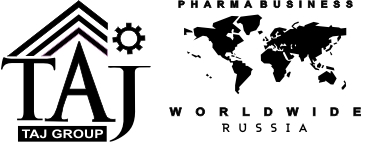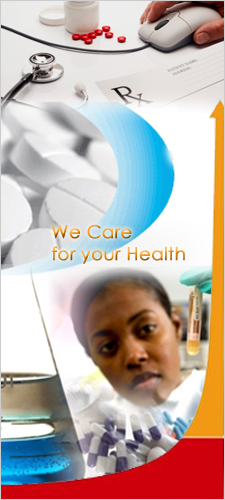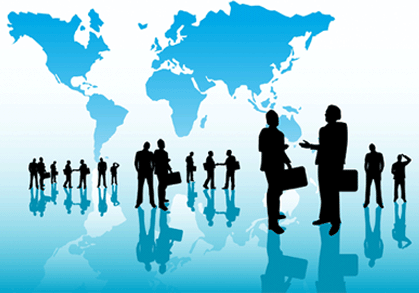|
 Last year, the
Russian pharmaceutical market expanded at an unprecedentedly high
rate of 35%, much higher than the US, West European and Central
and East European pharma markets. This growth was chiefly boosted
through the Beneficiary Drug Provision Programme, launched last
year. Also important was the fast development of pharmacy chains
and the continued high rate of medicine counterfeiting. Last year, the
Russian pharmaceutical market expanded at an unprecedentedly high
rate of 35%, much higher than the US, West European and Central
and East European pharma markets. This growth was chiefly boosted
through the Beneficiary Drug Provision Programme, launched last
year. Also important was the fast development of pharmacy chains
and the continued high rate of medicine counterfeiting.
 Overall market performance In 2005 the Russian
pharmaceuticals market was worth approx. $9bn in consumer prices
and $7.2bn in wholesaler prices, according to the DSM Group, a
company monitoring the Russian pharma market. The market recorded
high 35% year-on-year growth in consumer prices, representing a
staggering jump in comparison with the neighbouring Poland whose
pharma market expanded by a little over 7% last year. Overall market performance In 2005 the Russian
pharmaceuticals market was worth approx. $9bn in consumer prices
and $7.2bn in wholesaler prices, according to the DSM Group, a
company monitoring the Russian pharma market. The market recorded
high 35% year-on-year growth in consumer prices, representing a
staggering jump in comparison with the neighbouring Poland whose
pharma market expanded by a little over 7% last year.
 At the end of Q1 2006, the Russian pharma market
reached $1.48bn, up 18% year-on-year. According to DSM forecasts,
the Russian pharma market may be worth $10bn by the end of this
year, growing by 10% in comparison with 2005. At the end of Q1 2006, the Russian pharma market
reached $1.48bn, up 18% year-on-year. According to DSM forecasts,
the Russian pharma market may be worth $10bn by the end of this
year, growing by 10% in comparison with 2005.
 According to Aidar Ishmukhametov, the chairman of the board of
directors of Remedium, a group of firms analysing the Russian
pharma market, post-Soviet markets can be characterised by low
medicinal costs, low packaging costs, rapidly developing
pharmaceutical
According to Aidar Ishmukhametov, the chairman of the board of
directors of Remedium, a group of firms analysing the Russian
pharma market, post-Soviet markets can be characterised by low
medicinal costs, low packaging costs, rapidly developing
pharmaceutical
chains and a large assortment of medicines still well-known from
the Soviet period. According to Remedium, the Russian pharma
market expanded by 43% to $6.5bn in 2005.
 However, one of the most serious problems in Russia is the
continued counterfeiting of medicines, mostly antibiotics, which
are being sold also through private pharmacies. Sales of false
medicines remain high. Although, it is said that there are less
counterfeit preparations
However, one of the most serious problems in Russia is the
continued counterfeiting of medicines, mostly antibiotics, which
are being sold also through private pharmacies. Sales of false
medicines remain high. Although, it is said that there are less
counterfeit preparations
on the market, i.e. around 20% less last year than in 2004, their
value in 2005 was estimated at $300m.
Market growth drivers
 One of the most important factors driving Russian drug market
growth has been the governmental Beneficiary Drug Provision
Programme (DLO), introduced last year in compensation for the
cancellation of certain social welfare benefits. Under the
programme, over 14m Russians (mostly retirees) are provided with
medicines subsidised by the federal budget. Last year, sales of
pharmaceuticals available under the DLO contributed as much as 20%
of the abovementioned total market growth of 35%. According to the
Russian Ministry of Health and Social Development, last year the
DLO segment’s value amounted to approx. $1.37bn in consumer prices
and $1.27bn in wholesale prices, equalling approx. 15% of market
value. In total, 154m beneficiary prescriptions were written in
2005.
One of the most important factors driving Russian drug market
growth has been the governmental Beneficiary Drug Provision
Programme (DLO), introduced last year in compensation for the
cancellation of certain social welfare benefits. Under the
programme, over 14m Russians (mostly retirees) are provided with
medicines subsidised by the federal budget. Last year, sales of
pharmaceuticals available under the DLO contributed as much as 20%
of the abovementioned total market growth of 35%. According to the
Russian Ministry of Health and Social Development, last year the
DLO segment’s value amounted to approx. $1.37bn in consumer prices
and $1.27bn in wholesale prices, equalling approx. 15% of market
value. In total, 154m beneficiary prescriptions were written in
2005.
 It is worth noting that the average price per pack of DLO drugs
was over six times higher than the average price of a drug unit
sold in the retail segment, according to the DSM Group ($6.3 vs.
$1). This has made the programme drugs very attractive to
companies on the Russian pharma market, despite delays in payment
from the State and the fact that
It is worth noting that the average price per pack of DLO drugs
was over six times higher than the average price of a drug unit
sold in the retail segment, according to the DSM Group ($6.3 vs.
$1). This has made the programme drugs very attractive to
companies on the Russian pharma market, despite delays in payment
from the State and the fact that
the State pays for them at below their commercial value. According
to the DSM Group, all pharma distributors participating in the DLO
significantly increased sales. There were over 90 companies
entitled to dispense medicines under the DLO.
|




